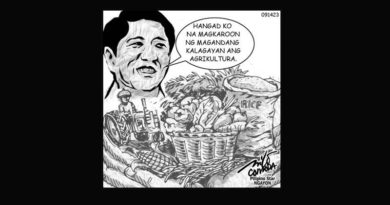HÀ NỘI : State money wasted on empty resettlement areas
| Nam Trung Yên resettlement area in Hà Nội. – VNA/VNS Photo Hoàng Lâm |
Three six-floor resettlement buildings constructed by the Hà Nội Housing Development and Investment Corporation 3 (Hacinco3) have been left empty for more than ten years, surrounding by fields of grass and garbage. The complex’s facilities, including electronic cabinets and hygienic equipment, have degraded.
A representative of Hà Nội’s Construction Department told Kinh Tế Đô Thị that the resettlement area with 150 apartments was built between 2001 and 2006 to accommodate residents who had to give up their land for the Sài Đồng Street expansion project. Due to disputes in the site clearance process, residents refused to receive the houses, while there has been no progress on the Sài Đồng Street expansion project.
It is only one of many abandoned resettlement areas in the capital city.
A security man at the Hoàng Cầu resettlement area said that most of the apartment buildings have been handed over to residents, but only a few of them have moved in.
“Many of them sent me the keys and asked me for help to sell their apartments,” he said.
According to the city’s Construction Department, there are nearly 1,000 resettlement apartments left uninhabited. Authorities blame legal issues relating to the land clearance for projects such as Ring Road 2 (Ngã Tư Sở-Ngã Tư Vọng) and Nhổn-Hà Nội Railway Station elevated railway project. At the moment, authorities have no plans to use as many as 76 of the resettlement apartments.
Most of the land clearance projects have been behind schedule. Since residents see no progress on construction, they refuse to leave their homes for the resettlement houses. This leaves the resettlement houses empty and causes their subsequent degradation, the department said.
Professor Đặng Hùng Võ, former Deputy Minister of Natural Resources and Environment, said that house sellers buy resettlement houses at low prices then sell them to earn profits. Because the homes are purchased by people the State is not responsible for resettling, State resources are wasted.
“People in need of resettlement are turning their backs on resettlement houses. The policy of resettlement houses is appropriate but has not been implemented thoroughly,” said Professor Trần Chủng, head of the Quality Department, Việt Nam Construction Association and former head of State Department for Construction Quality Supervision of the Ministry of Construction.
It is a sacrifice for the residents to give their land and move to a place far from the main road, and give up their business locations while their children must travel far to attend school, he said.
“The resettlement house model we have used in the past does not truly reflect the spirit of settlement, which means providing a place for residents to settle down and set themselves up in business. The majority of people the State resettles have to move to hard-to-access areas,” he said. “Many do not want to move because their homes are located on high floors, preventing them from easily running businesses.”
Wasting and threatening
The abandonment of resettlement houses is not only a huge waste of the State budget, but also imposes potential risks for people who do end up moving in.
Phạm Hùng Cường, deputy principal of Construction University said that high rises must follow maintenance careful maintenance procedures. Installed technical systems such as pipes and electricity that have not been put into use and maintained will degrade and be unsafe for users. This is a particular concern in Việt Nam’s humid, tropical weather.
“First we waste money for building resettlement houses. Then we waste money for maintenance work for abandoned houses. The waste is doubled,” Trần Chủng said.
Proposal to remove
Hà Nội aims to complete more than 9,000 resettlement apartments by 2020, at a cost to the State budget of dozens of billions of đồng. This number exceeds the city’s budget, which slows down construction progress on the resettlement houses.
Phạm Sỹ Liêm, former Deputy Minister of Construction and Vice Chairman of the Việt Nam Construction Association, said that if construction on the resettlement apartments is behind schedule, residents will be reluctant to hand over land. However, when the resettlement houses are completed too far ahead of schedule, residents are worried about the quality of degraded homes.
While many residents are in desperate need of resettlement houses, a lot of the houses have been deserted, Liêm said, noting the paradoxical nature of the situation.
Trần Chủng said that the State should give residents a specific amount of money to buy suitable commercial houses. The residents will then be able to purchase accommodations similar to what they already use.
Hà Nội recently proposed to the Prime Minister putting in place a special mechanism to build 22,300 commercial apartments, which would help add to the housing stock for resettlement. There will be 20 projects with 14,525 ordered apartments, basically meeting the demand of resettling people between 2017 and 2020.
The city’s Construction Department proposed dismantling 150 uninhabited apartments of Hacinco3 resettlement project to reduce damages for the investor and to make room for the commercial houses to be ordered by the Government.
A financial expert told the Tiền Phong (Vanguard) newspaper that the dismantlement is a huge waste worth hundreds of billions of đồng.
The department also proposed withdrawing deserted resettlement apartments after two years past completion.
Chủng said that to solve the deserted house problem, we should not build any more new resettlement areas but utilize the budget to deal with degradation.
Chủng also said that site clearance should be conducted together with building resettlement areas to avoid early completion of resettlement houses, which leads to their desertion. – VNS









